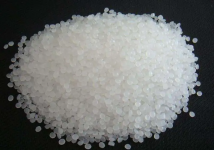read: 1082 time:2025-07-17 14:48:26 from:化易天下
When it comes to removing paint, one common question that arises is, "will acetone remove paint?" Acetone is a powerful solvent widely used in various industries, including the chemical industry, due to its ability to dissolve many organic compounds. This article explores whether acetone can effectively remove paint, the types of paint it can remove, and the potential risks associated with using acetone for this purpose.
Acetone, also known as propanone, is a colorless, volatile liquid that is widely used as a solvent. It is highly effective at breaking down and dissolving various substances, including certain types of plastic, adhesives, and paints. Acetone is commonly found in household products such as nail polish removers and is also used industrially in processes like paint thinning and cleaning.
To answer the question, "will acetone remove paint?" the answer is generally yes, but with some important caveats. Acetone is particularly effective at removing oil-based paints, varnishes, and enamels. It works by breaking down the paint's chemical bonds, allowing it to be easily wiped away from the surface. However, its effectiveness can vary depending on the type of paint and the surface it’s applied to.
Acetone is most effective at removing oil-based paints and lacquers. It can also remove latex-based paints, but this may require more time and effort due to the different chemical composition. For water-based paints, acetone is less effective, and in such cases, other solvents might be better suited. Acetone can be particularly harsh on certain surfaces, so it’s crucial to test a small area before applying it to a larger section.
While acetone can effectively remove paint, it is important to be aware of the potential risks involved. Acetone is a very strong solvent, which means it can also damage the underlying surface if not used carefully. For example, acetone can dissolve plastics and damage wood finishes. Additionally, acetone is highly flammable and produces fumes that can be harmful if inhaled in large quantities. Therefore, when using acetone to remove paint, it’s essential to work in a well-ventilated area and to take proper safety precautions, such as wearing gloves and protective eyewear.
If you decide to use acetone to remove paint, follow these steps to ensure effective and safe use:
Preparation: Ensure the area is well-ventilated and wear protective gear, including gloves and goggles. Place a drop cloth or old newspapers under the work area to catch any drips.
Application: Dampen a clean cloth with acetone and gently rub the painted area. For tougher paint spots, you may need to apply more acetone and let it sit for a few minutes before wiping.
Cleaning Up: Once the paint is removed, clean the surface with soap and water to remove any residual acetone. This step is crucial to prevent any further damage to the surface.
Disposal: Dispose of any acetone-soaked materials in accordance with local hazardous waste disposal guidelines, as acetone is considered a hazardous material.
So, will acetone remove paint? Yes, acetone can effectively remove many types of paint, particularly oil-based varieties. However, its use should be approached with caution due to the potential risks to both the user and the surface being treated. By following safety guidelines and using acetone correctly, you can achieve effective paint removal while minimizing any adverse effects.

Jincheng Petrochemical's 300000 ton polypropylene plant successfully trial production, 2024 polypropylene market analysis

The ABS market remains sluggish, what is the future direction?

Market differentiation of bisphenol A intensifies: prices rise in East China, while prices generally decline in other regions

The production method and process flow of silicone acrylic lotion, and what are the common raw materials